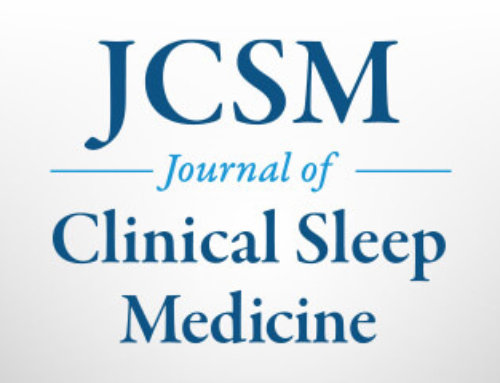WESTCHESTER, Ill. – A sleep-related breathing disorder, common in heart failure, increases one’s heart rate variability. Further, central sleep apnea (CSA) and obstructive sleep apnea (OSA) produce different patterns of heart rate variability, which are likely to reflect the different pathophysiological mechanisms involved, according to a study published in the November 1 issue of the journal SLEEP.
Matthew T. Naughton, MD, of Alfred Hospital and Monash University in Melbourne, Australia, evaluated 21 patients with heart failure who were referred for polysomnography for investigation of a sleep-related breathing disorder. For each subject, two conditions were examined: a sleep-related breathing disorder and stable breathing.
There were three main findings of this study:
- Within the subjects, the transition from stable breathing to a sleep-related breathing disorder was associated with an increase in heart rate variability, as well as an increase in the low frequency/high frequency ratio.
- No difference in heart rate variability was found from samples taken from the beginning and end of the sleep period and, importantly, no evidence that cardiac autonomic regulation altered during the night independent of a sleep-related breathing disorder.
- OSA and CSA produced different patterns of heart rate variability, with OSA showing increased absolute high frequency power and reduced very low frequency percentage compared with CSA.
"Heart rate patterns are influenced enormously by breathing patterns,” said Dr. Naughton. “In heart failure patients during sleep, this information might be able to determine the presence or absence and type of sleep apnea. This could be useful in determining the stability of heart failure (and therefore predict a decline in heart function and signal when additional anti-heart failure therapies are required) and also signal when alternative therapies may be required (such as those directed towards treating OSA). Further work is required in this field."
OSA is a sleep-related breathing disorder that causes one’s body to stop breathing during sleep. OSA occurs when the tissue in the back of the throat collapses and blocks the airway, preventing air from getting into the lungs.
CSA is a breathing disorder that causes one’s body to decrease or stop the effort of breathing during sleep. This occurs in an off-and-on cycle. It is a result of a problem in the brain or heart. It is different from OSA because the problem is not caused by a blockage of the airway.
Scientific evidence shows that continuous positive airway pressure (CPAP) is the best treatment for sleep apnea. CPAP provides a steady stream of pressurized air to patients through a mask that they wear during sleep. This airflow keeps the airway open, preventing the pauses in breathing that characterize sleep apnea and restoring normal oxygen levels. CPAP users often express dramatic improvements in how they feel. They are more alert, have more energy and are able to perform at higher levels for longer periods of time.
For more information on CPAP, please visit www.SleepEducation.com/CPAPCentral. This Web site, created by the American Academy of Sleep Medicine (AASM), provides the public with comprehensive, accurate and reliable information about CPAP. CPAP Central includes expanded information about OSA and CPAP, including how OSA is diagnosed, the function of CPAP, the benefits of CPAP and an overview of what to expect when beginning CPAP therapy, the position of experts on CPAP and tools for success. CPAP Central also features an interactive slide set that educates the public about the warning signs of OSA.
Those who think they might have OSA, CSA, or another sleep disorder are urged to consult with their primary care physician or a sleep specialist.
SLEEP is the official journal of the Associated Professional Sleep Societies, LLC, a joint venture of the AASM and the Sleep Research Society.
SleepEducation.com, a Web site created by the AASM, provides information about various sleep disorders, the forms of treatment available, recent news on the topic of sleep, sleep studies that have been conducted and a listing of sleep facilities.
For a copy of this article, entitled, “Sleep Apnea in Heart Failure Increases Heart Rate Variability and Sympathetic Dominance,” or to arrange an interview with an AASM spokesperson regarding this study, please contact Jim Arcuri, public relations coordinator, at (708) 492-0930, ext. 9317, or jarcuri@aasm.org.
# # #




